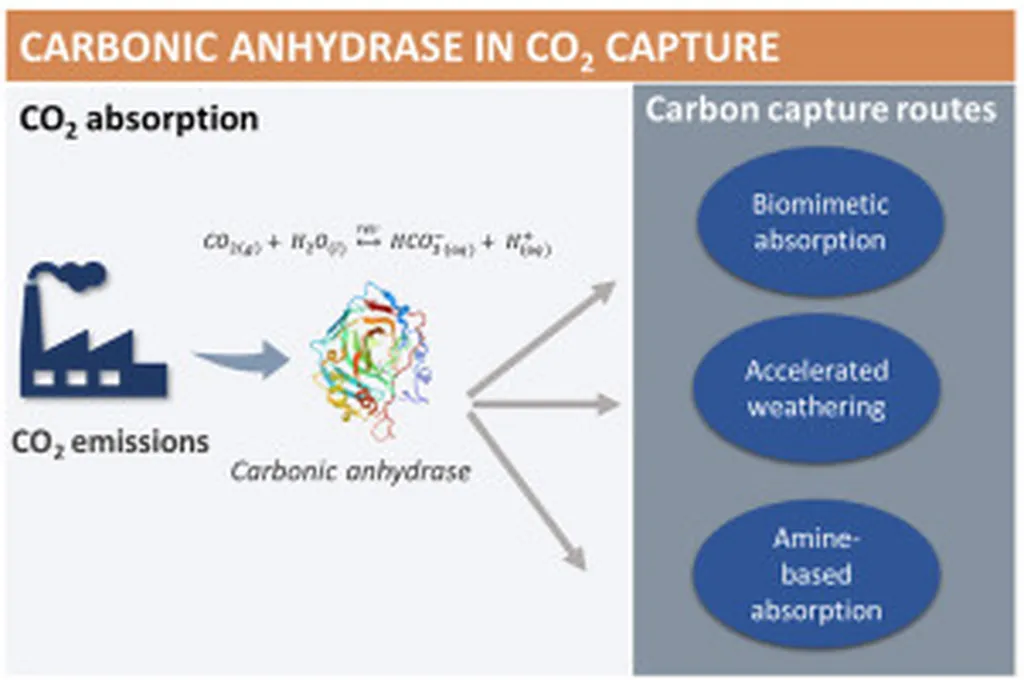In the relentless pursuit of mitigating climate change, scientists are continually exploring innovative methods to capture and reduce carbon dioxide (CO2) emissions. A recent study published in the Journal of Carbon Dioxide Utilization offers a promising advancement in this arena, demonstrating a significant leap in CO2 absorption efficiency using a novel approach that combines human carbonic anhydrase (hCA) with a traditional solvent in a cutting-edge membrane contactor system.
Led by Mohamed Nadir Khelifi from the Laboratoire de Génie des Procédés pour le Développement Durable et les Produits de Santé (LGPDDPS) at the Ecole Nationale Polytechnique de Constantine in Algeria, the research delves into the mass transfer simulation of CO2 absorption using a hollow-fibre membrane contactor. This sophisticated system employs chemical and Multiphysics modules to model mass transfer and reacting flow within COMSOL software, providing a robust framework for evaluating the absorption process.
The study’s breakthrough lies in the integration of human carbonic anhydrase with n-methyldiethanolamine (MDEA) solvent. “We found that incorporating hCA with MDEA enhances CO2 absorption by 34% compared to MDEA alone,” Khelifi explains. This remarkable improvement is attributed to the enzyme’s high reaction rate, which significantly boosts the absorption efficiency.
The research also investigates key operational parameters, revealing that while factors like gas flow rates and thickness can decrease CO2 absorption efficiency, other variables such as membrane porosity, fibre length, liquid flow rate, number of fibres, and solvent concentration all contribute to increased efficiency. “The solvent concentration, in particular, plays a crucial role in mass transfer during CO2 absorption,” Khelifi notes.
The implications of this study for the energy sector are substantial. As the world seeks more sustainable and environmentally friendly solutions for CO2 capture, the integration of enzymes like hCA represents a groundbreaking approach in green chemistry. This innovation could pave the way for more efficient and cost-effective carbon capture technologies, which are essential for reducing greenhouse gas emissions and combating climate change.
The study’s findings not only highlight the potential of membrane contactors as an effective strategy for intensified CO2 capture but also underscore the importance of interdisciplinary research in driving technological advancements. As the energy sector continues to evolve, such innovations will be crucial in shaping a more sustainable future.
This research, published in the Journal of Carbon Dioxide Utilization, offers a compelling example of how scientific ingenuity can address some of the most pressing challenges of our time. By harnessing the power of enzymes and advanced membrane technologies, we can make significant strides towards a greener, more sustainable energy landscape.

